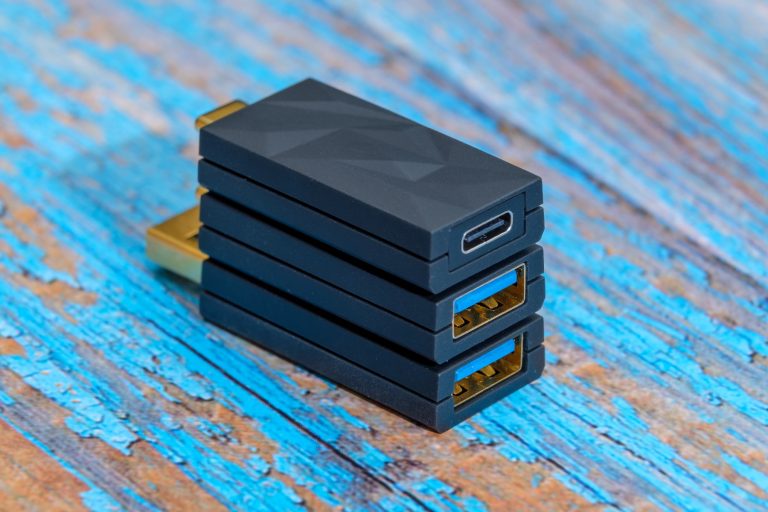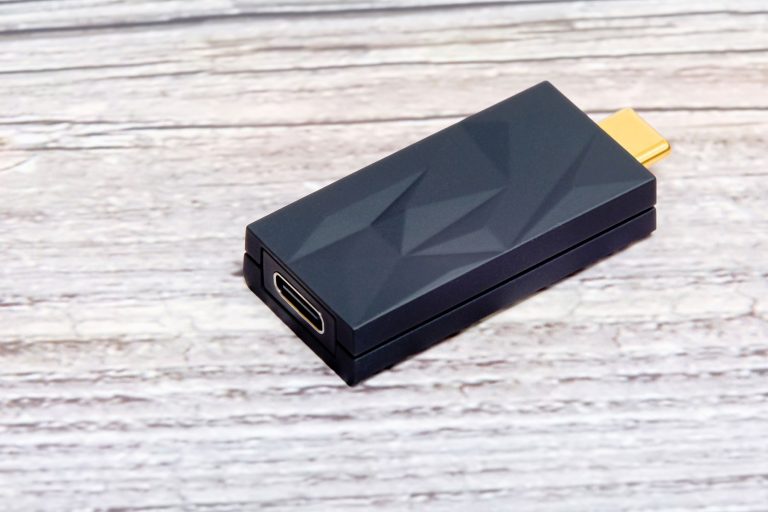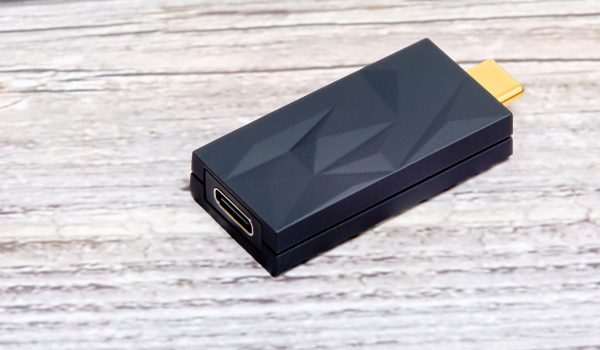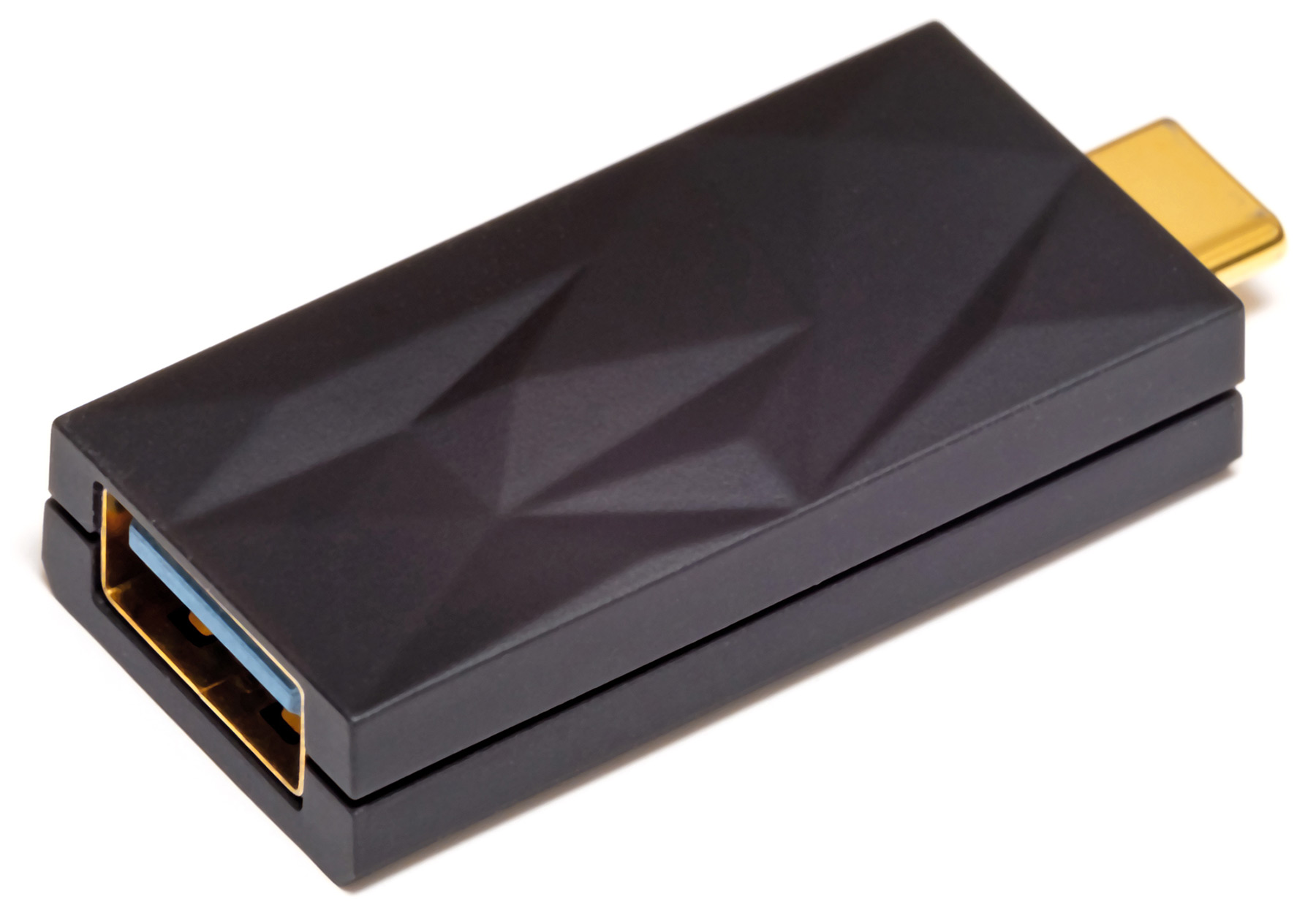Enjoy the ‘new’ silence.
Connecting audio gear via USB can have pros and cons. While capable of passing hi-res data at max resolution and allowing bit-perfect transfer, USB was not created specifically for audio.
It carries both power and data. It is susceptible to electrical noise, for example, from the computer’s power supply. This has a negative effect on sound quality.
Fear not! At iFi, we first banished these gremlins with the iSilencer3.0 and now, we’re making silence sound even better with the iSilencer+.
Take a look at our Noisebusting Tech Note.

Plug. Play. Pop free.
Electrical noise on USB causes errors, data loss and poor signal integrity. You will hear these as distortion – pops, clicks and delays.
The iSilencer+ solves all of this quickly and easily. It plugs directly into the USB port of your computer as a link between your computer and your DAC.
It will remove electrical noise, both EMI and RFI, at source. Your music will seem clearer, warmer, and more transparent with improved bass.
Double whammy.
As well as plugging the iSilencer+ into the active USB port between the computer and DAC, it can also be plugged into unused USB ports too. This will further reduce radiated EMI.
Each time the number of units (and therefore the number ANC II circuits) is doubled, noise reduction capability also doubles.
Double whammy.

Silence. Improved.
The iSilencer+ uses our latest Active Noise Cancellation II® technology. It decreases noise in a similar way to noise-cancelling headphones.
We use our REBalance® tech to get rid of clicks and distortion.
We’ve upgraded the circuitry; low-ESR tantalum capacitors have been added for improved input and output filtering. Filtering capacitance has been increased 10-fold.
Why iSilencer+?
We’ve added several flavours – it comes in 3 versions and includes the newer USB-C connector.
- USB-A to USB-A
- USB-C to USB-A
- USB-C to USB-C
Why did we name it iSilencer+? Simply because it just gives you more – more options, improved filtering, and just more silence.
Active Noise Cancellation (ANC) reduces unwanted sound by the addition of a second sound wave specifically designed to cancel out the first. This basically results in no sound at all as it reaches unwanted sound even at the lowest frequencies.
Passive noise cancellation is done by means of insulating filters and works best on the middle to high frequencies. It does not work on the lower frequencies meaning that some sound can still be heard.
If a file is “Bit Perfect’ it means it has stayed the same. For example, if a PCM file is played through a DAC to improve the sound quality and the DAC does not change the file format. The file is ‘Bit Perfect’.
The common noise filter cuts out most noise gremlins found in typical audio systems such as RFI/EMI.
DACs convert digital information, stored or streamed by computers, into music we can hear through speakers or headphones.
Every device that’s a source of digital sound has a built-in DAC (TVs, games consoles, CD players, phones, portable music players etc). Dedicated external DACs sound much better than standard DACs used in digital devices such as phones.
EMI is a type of interference caused by errant and unwanted electromagnetic waves that are received and amplified by an audio system. They cause some of the annoying ‘audio gremlins’ we often talk about.
Radio-frequency interference (RFI) is very similar to electromagnetic interference (EMI) but is found in the radio frequency spectrum. It is another source of irritating, unwanted noise often talked about as an ‘audio gremlin’.

























